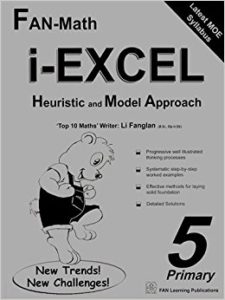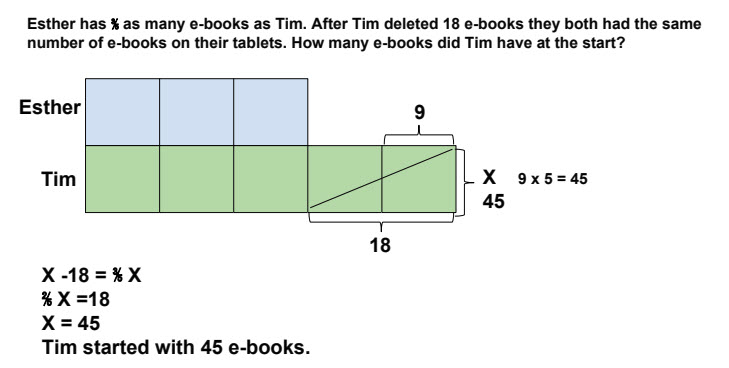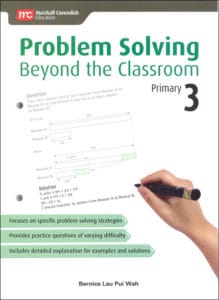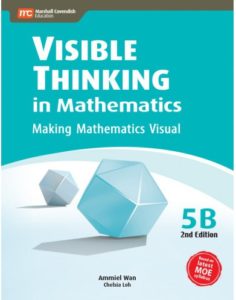Word Problem Wednesday was such a hit, we’re going to continue throughout the year with one problem a month.
This problem comes from an oldie, but goodie: i-Excel Heuristic and Model Approach Primary 5 by Li Fanglan published by FAN-Math
Bob’s Bikes sold 96 bikes during the week and 1/4 of what was left on the weekend. After that, Bob still had 1/2 of his bikes left. How many bikes did Bob have at first?
Submit your solutions and we’ll post all interesting strategies.
The previous problem came from Dimensions Math 6A by Bill Jackson and Kow-Cheong Yan published in 2016 by Star Publishing Pte Ltd and Singapore Math Inc:
Esther has 3/5 as many e-books as Tim. After Tim deleted 18 e-books, they both had the same number of e-books on their tablets. How many e-books did Tim have at the start?
Dedicated reader, Shirley Davis submitted the following solution:
























